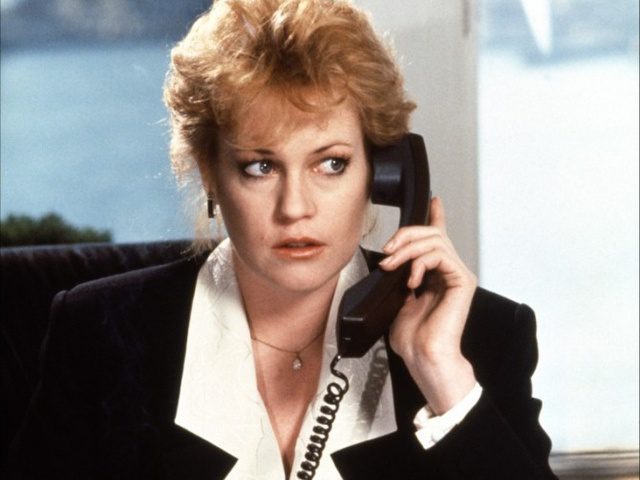 In the 1980’s, the power suit was an essential item in a professional woman’s wardrobe. The power suit, equipped with shoulder pads to increase stature, paired with high heels for the extra power lift, was a symbol of women’s new prominence in the workplace. Remember Melanie Griffith’s very ’80s shoulder pads in “Working Girl”? Women in all industries were cognizant that their wardrobe reflected not only their competence but their ambition.
In the 1980’s, the power suit was an essential item in a professional woman’s wardrobe. The power suit, equipped with shoulder pads to increase stature, paired with high heels for the extra power lift, was a symbol of women’s new prominence in the workplace. Remember Melanie Griffith’s very ’80s shoulder pads in “Working Girl”? Women in all industries were cognizant that their wardrobe reflected not only their competence but their ambition.
Donna Karan supported the need for an empowering yet practical wardrobe with her mix and match “seven easy pieces”. Ms. Karan, who recently resigned, helped women transition fashionably from work to after work activities with ease. Women were stylish in and out of the office. The focus was on simple elegance.
But the power suit experienced a makeover in 2008 with Hillary’s presidential campaign. Hillary gifted women a new version of the “power suit”, the pants suit. Her unabashed defense of this new practical look as a empowering statement for women resulted in professional women, in and out of politics, replacing their uncomfortable business attire for the pant suit. The resounding message was that a woman could be powerful despite her wardrobe choices, within certain parameters of course.
Women have always been advised that the way they look is important. Look good, but not too good. Pay attention to the hemline. Wear makeup but don’t overdo it. Never show too much cleavage. Ambitious women have always been told that if they wanted a leadership position, they needed a wardrobe to reflect that ambition; the message being “dress the part”. It was as if their appearance and overall “look” was required to demonstrate the confidence and influence necessary for acknowledgement: the affirmation that they were someone who had important ideas and opinions, whose work mattered, who deserved attention and appreciation.
Women still struggle for recognition and equality in the workplace. But are women today migrating from a reliance on their wardrobe to show confidence and competence to using their wardrobe choices to demonstrate a new authenticity and empowerment? Is the power suit morphing into a power choice to be authentic?

Recent Comments